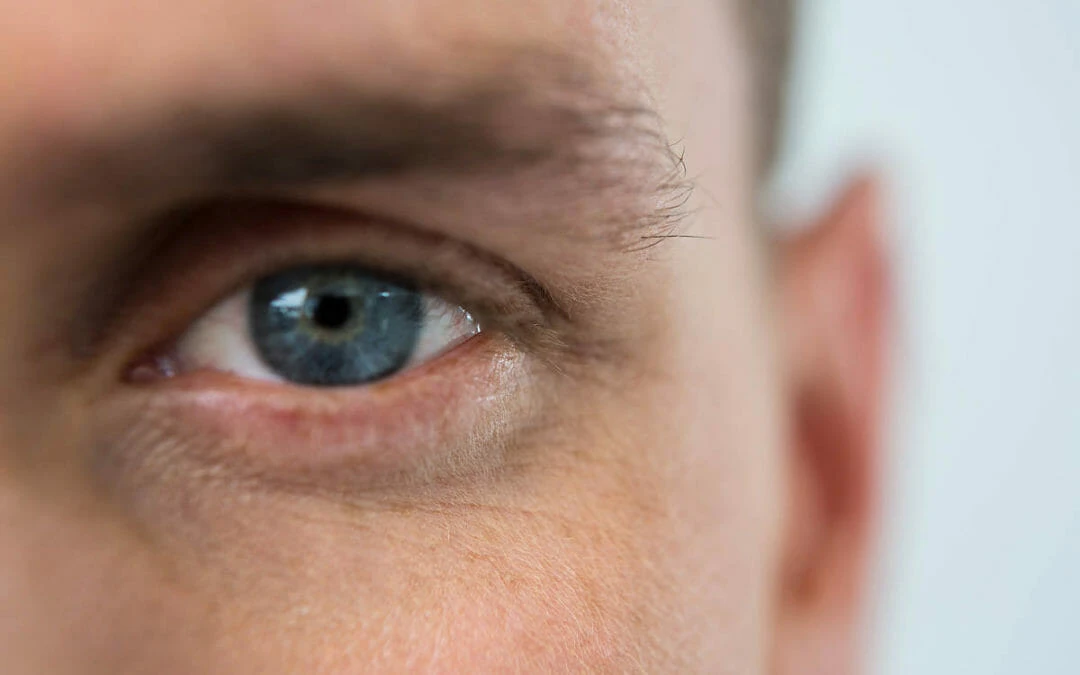Corner of the eye itching is most commonly caused by bacteria in the eye area. Sometimes parts can no longer function properly and may cause watery eyes.
Some people experience itchy eyes.
Viruses and bacteria can infect the lining of the eye or tear duct, causing itching in the corner of the eye. Allergies and how often the body produces and drains tears may also cause itchy eyes.
Most causes are treatable with OTC medication, which can ease the symptoms and provide relief from the itching.
Something in your eye- corner of the eye itching?
Sometimes itchy is caused by dust or sand or eyelash spotting in your eyelids or behind your eyelashes causing discomfort to the eyelids. This may temporarily block ducts that are having tears.
Corner of the eye itching? It could be an allergy.
As this hay fever statistic says, allergies have become increasingly frequent. Almost 47% of people have allergies, and about 4% have asthma. In the past twenty years hospital admissions have increased by 615%. That’s an enormous number.
One of the eyes that gets impacted most with allergens is the conjunctiva. This membrane covers the eye area. The fabric is thin and fragile. They may also be irritated from airborne particles such as pollen from the grasses of common rye (Loliumperenne), one of the primary causes of hay fever.
When pollen is in the air, you may be inclined to write off itchy eyes as simply a symptom of seasonal allergies.
Any allergic reaction can trigger symptoms in the ocular structure, such as itching in the tear duct. The allergens most related to this discomfort are dust mites and pollen .
Hay fever is an allergic reaction. Hay fever symptoms include a runny nose, itchy eyes and sneezing.
Allergic conjunctivitis: Corner of the eye itching
Triggers and treatment Allergic conjunctivitis occurs when an irritant gets into the eye and causes inflammation, or swelling, in the conjunctiva. Allergic conjunctivitis is uncomfortable, but it is not dangerous.
Allergens can include: Pollen Animal hair Dust mite faeces Mould
Allergic conjunctivitis can be caused by irritation or inflammation in the conjunctival tissues. Allergy conjunctivitis is unpleasant but isn’t harmful.
Allergic conjunctivitis occurs when the immune system overreacts to an allergen and triggers the release of histamine. An excess of this substance in the body causes allergy symptoms such as itching in the tear duct, crying eyes , sneezing, red eyes and hives.
Some people with conjunctivitis are treated with medicated eye drops and antihistamine medications. Drugstores sell a range of medication eye drops that reduce irritation. Many patients feel better after using antihistamine tablets for a long period of time.
Dry eyes- corner of the eye itching
Doctors sometimes call dry eye disease “dysfunctional tear syndrome.” It means that someone’s tears do not keep their eyes lubricated enough.
Normally, when a person blinks, the eyelid spreads tears across the front of the eye, or the cornea. This keeps the eye wet and washes away unwanted particles to help prevent infection.
Your lacrimal glands produce tears which moisturize your eye area, while also keeping it healthy. If tears do not wet the eyes it can result in dry eyes. Dry eyes increase in age due to the production of less tears. Other symptoms include irritation, soreness and sensitivity to light.
Common symptoms of dry eye disease include:
- Irritated and itchy eyes
- A feeling of having something in the eye
- A “gritty” feeling in the eyes
- A burning sensation in the eyes
- Excessive watering
- Blurred vision
What is itchy tear duct?
The itchy tear gland is often seen as an ophthalmic condition. Itchy eyes can be caused by numerous conditions, including allergic dermatitis and infection. These diseases are generally not diseases which cause eyesight damage. The itchy tear ducts can occur as a tear duct infection.
Pink eye- corner of the eye itching
Pink eyes are commonly used in conjunction with allergic reactions. Conjunctivitis may cause itch and irritation in ducts and tear ducts.
Viral conjunctivitis-corner of the eye itching
Viral conjunctivitis is the inflammation in the conjunctiva that occurs when a virus enters the eye such as influenza. This form – conjunctivitis – has high infectious potential and is extremely common during fall/winter seasons.
Pink eye or viral conjunctivitis causes a red or bloodshot eye and excessive tearing. It may be highly contagious for the first few days. The infection will run its course in about 10 days.
If you suspect pink eye: Wash your hands often Avoid touching the unaffected eye.
Bacterial conjunctivitis- corner of the eye itching
Besides conjunctivitis, bacteria are very infectious. It is possible that bacteria causing it to resemble bacteria responsible for strep throat. Often, the eye does not discharge much at all.
Children may have bacterial conjunctivitis if they are not washing the fingers regularly as much as adults. A doctor may use antibiotic drops if there are severe symptomatic signs.
Tear duct infection- corner of the eye itching
A tear duct infection or dacryo-cystitis is a condition that causes itching on the eyes. If your tear duct is blocked or tears aren’t drainable, then bacteria can accumulate and cause disease.
An infected nasal and throat may lead to clogged tear canals. Besides the itching, it can cause symptoms like:
- Excessive tearing.
- Redness of the white part of the eye.
- Recurrent eye infection or inflammation (pink eye)
- Painful swelling near the inside corner of the eye.
- Crusting of the eyelids.
- Mucus or pus discharge from the lids and surface of the eye.
- Blurred vision.
Treatment Patients who develop dacryocystitis usually require antibiotics to treat it. If they aren’t treated it can worsen.
When a tear gland infection continues a person may require surgery. A surgeon can narrow the drainage channel and open the blocked drainage duct.
Inflammation from a cold or sinus infection may cause a blocked tear duct.
Bacterial conjunctivitis- corner of the eye itching
Bacterial conjunctiveitis occurs when the eye is directly surrounded by bacteria. Usually, this infection results from yellow-colored eye secretions which are often visible.
Conjunctivitis is caused by itchy skin, scabs, and the excess rheum. The eye rash and wateriness are caused by a combination of swollen skin and itchy eyes.
Treatments for corner of the eye itching
Over-the-counter medications are often helpful in treating itchy eyes. Itching is caused by bacteria and viruses. In some cases a section of the eye can stop functioning correctly and not produce anymore tear forming. Some people experience this itchy eye.
Your eye doctor may recommend treatments such as:
- Lubricating eye drops for dry eyes
- Antihistamine eye drops for allergies
- Antiviral drops or ointments for certain viral infections such as herpes
- Antibiotic eye drops for bacterial conjunctivitis.
Punctal Plugs
we would recommend tear duct plugs; these are tiny silicone ‘covers’, easily applied in the clinic, which block one or two of the ducts and increase the natural tear filter.
Managing the symptoms of dry eye disease- corner of the eye itching
If someone is affected by an eye disease, dry eye damage can be severe or affect vision. Some people suffer from chronic diseases, which means the disease is not cured. Many people can control dry eye diseases with the following solutions.
If tears get drained out, the tear glands can stop evaporation of tears from lining them. Surgical technicians can use a removable silicone plug to stop the tear ducting system. They might recommend surgical treatments to temporarily shut down tears in more serious instances.
Using artificial tears 4 to 6 times a day can be helpful for almost all causes of burning and irritation, especially dry eyes.
Some tips to take care of your eyes
- Don’t touch your eyes with dirty hands.
- Wash your hands several times a day using antibacterial soap.
- Do not lend your glasses , contact lenses, makeup and any other items for personal use such as towels and pillows.
- Don’t sleep with contact lenses put on.
- Never disregard professional medical advice or delay in seeking it.
Best corner of the eye itching treatment – TheraLife
Get
Call a doctor toll free 1-877-917-1989 US/Canada.
Send emails to [email protected]
Frequently Asked Questions
Why is my eye so itchy in the corner?
There are many reasons for your corner of the eye itching including but not limited to allergies, dry eyes, conjunctivitis, tear duct infections, and dust.
How do I stop the corner of my eye from itching?
You can stop the corner of eye itching by treating the root cause. Your doctor may use eye drops, antibiotic drops, anti-viral drops and anti-histamine drops for allergies. Learn to treat dry eyes to stop your eye from itching from TheraLife. Oral dry eye treatment that works.
What does it mean when the inner corner of your eye itches?
In most cases, when your inner corner of your eye itches can be relieved with over the counter remedies from a drug store. Take some allergy medications or eye drops to relief dry eyes. When these measures do not work, go to your eye doctor and find out the root cause. The causes could be allergies, chronic dry eyes, eye infections and more.
How do I stop the inner corner of my eye from itching?
Get fast relief from itchy eyes by using eye drops, and anti-histamines. If these measures do not work, go to your eye doctor who will prescribe antibiotic drops, anti-viral drops and even steroid drops.
Conclusion
Many conditions can cause your eyelashes and eyelash line to feel itchy. If you’re experiencing itchy eyelashes, it’s important not to scratch as this can further irritate or possibly infect the area.
The underlying cause of itchy eyelashes is often some type of external irritant. Sometimes it’s a health condition. The cause will determine how you should treat it.
Itching eyelashes can be caused by a wide range of conditions, including allergens and irritants in the environment. Itching and discomfort can often be treated at home. When itching is severe, doesn’t resolve easily, or is accompanied by other symptoms, like eye pain, seeing a doctor can help.
References
Rubenstein JB, Spektor T. Allergic conjunctivitis. In: Yanoff M, Duker JS, eds. Ophthalmology . 5th ed. Philadelphia, PA: Elsevier; 2019:chap 4.7.





